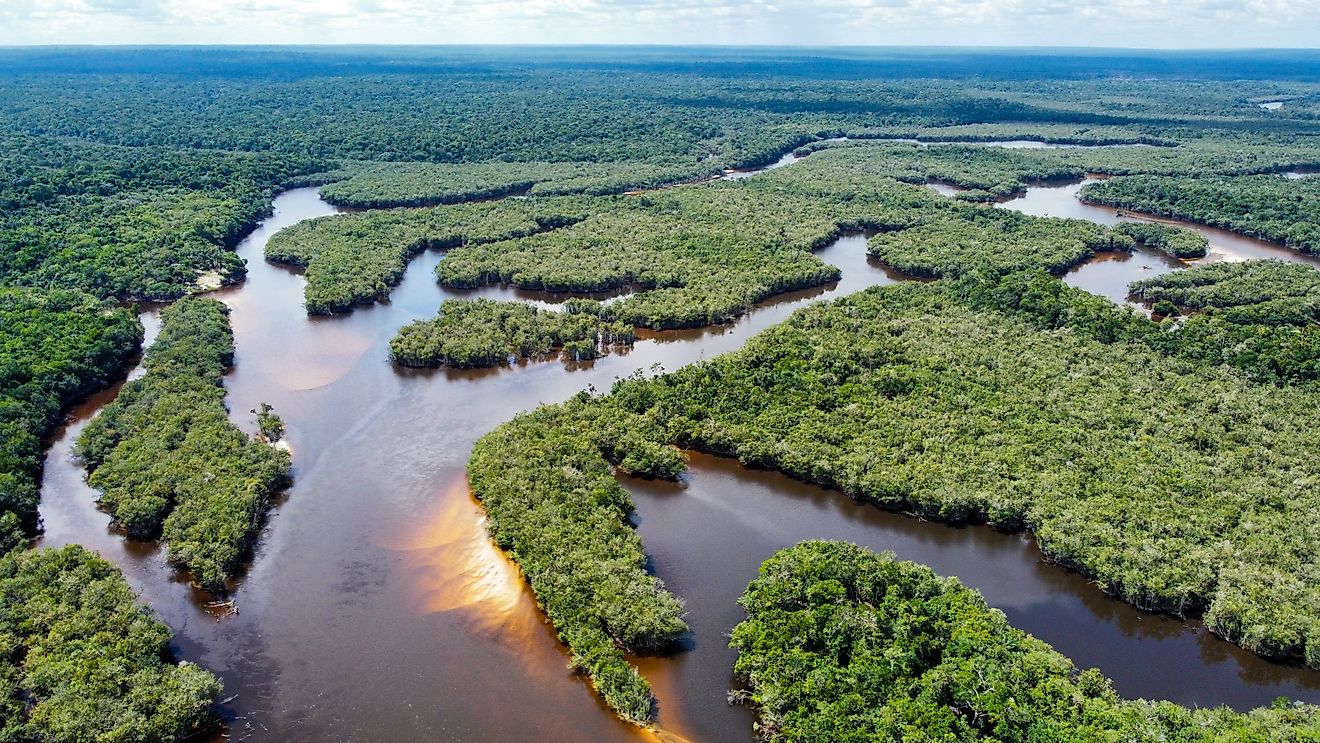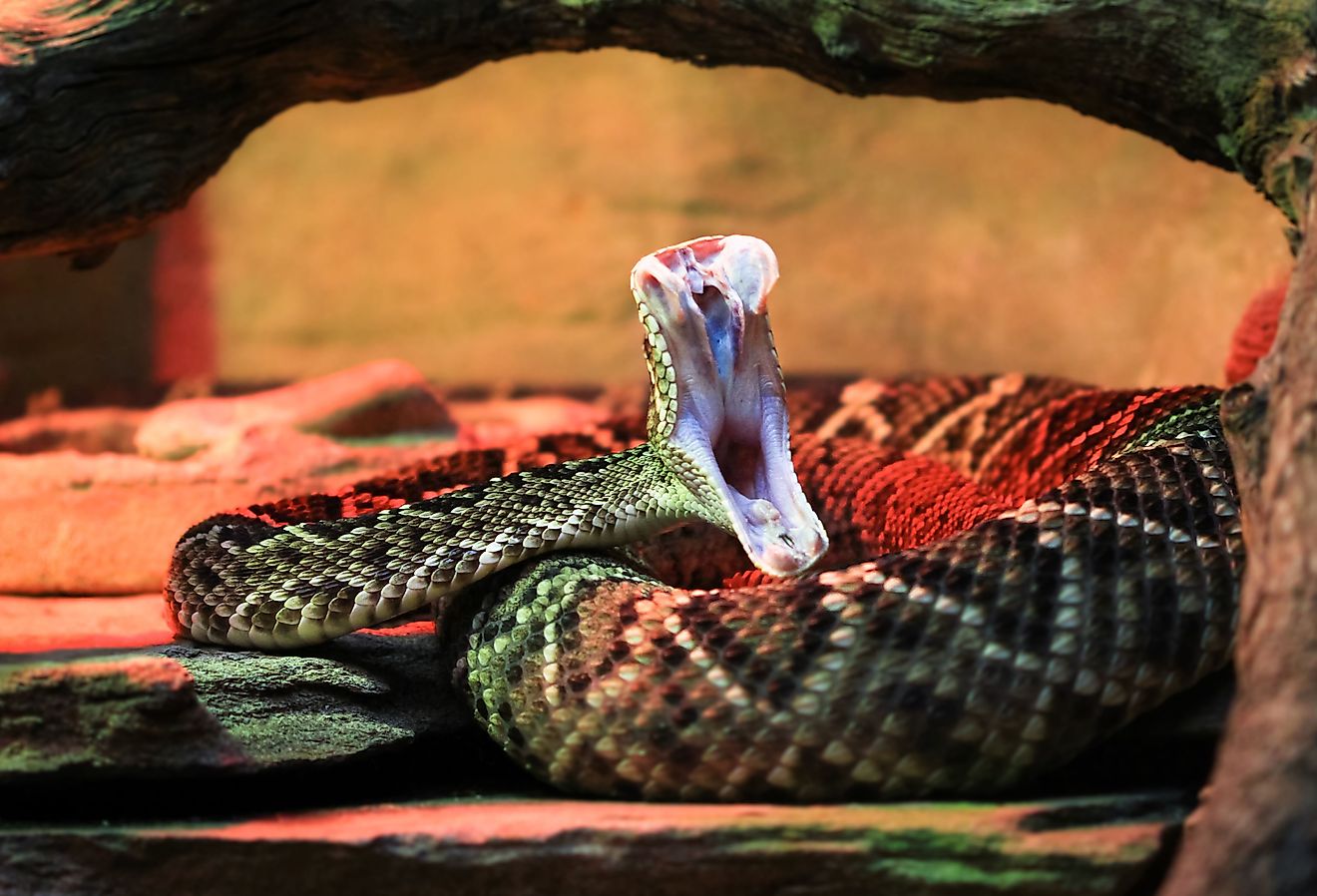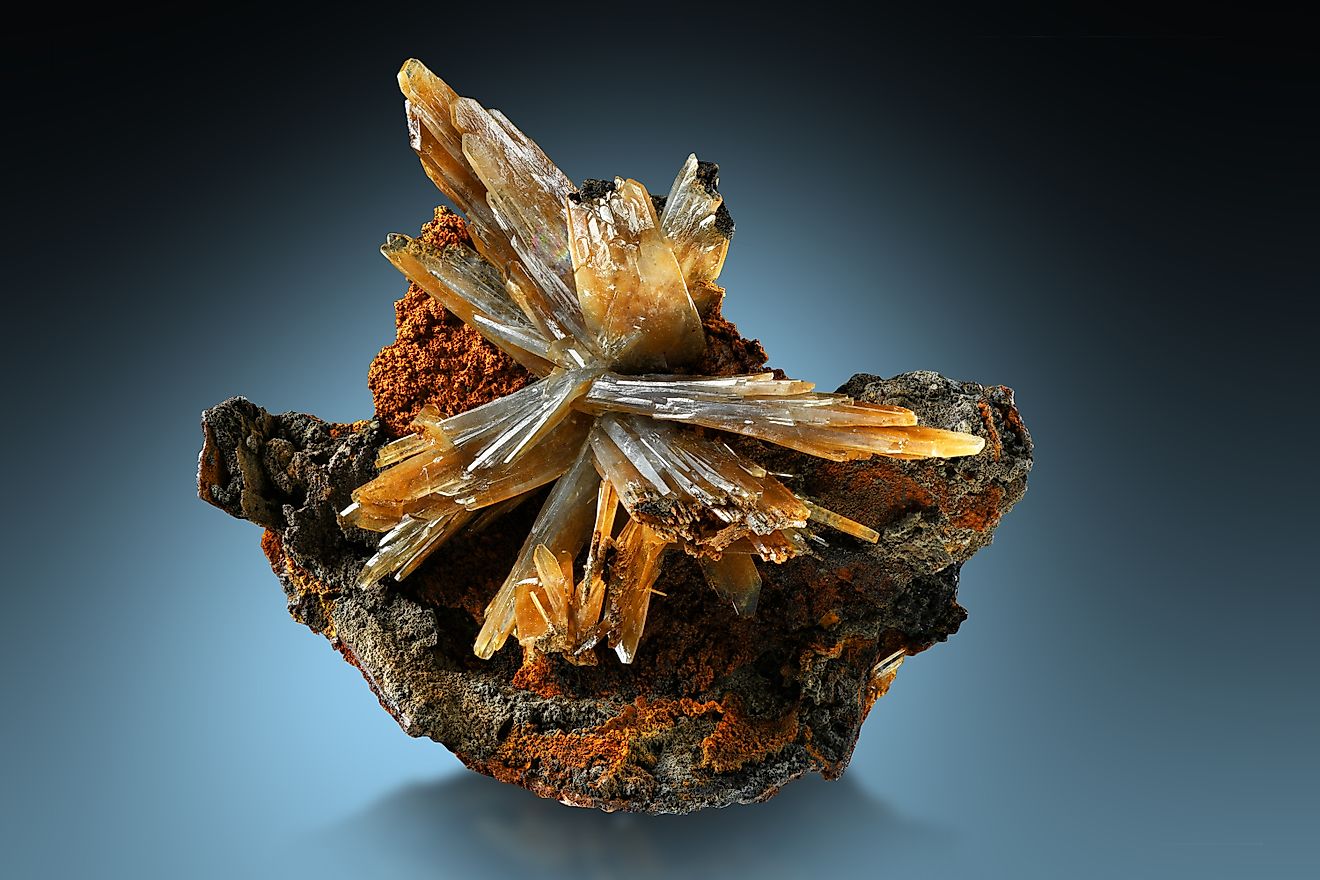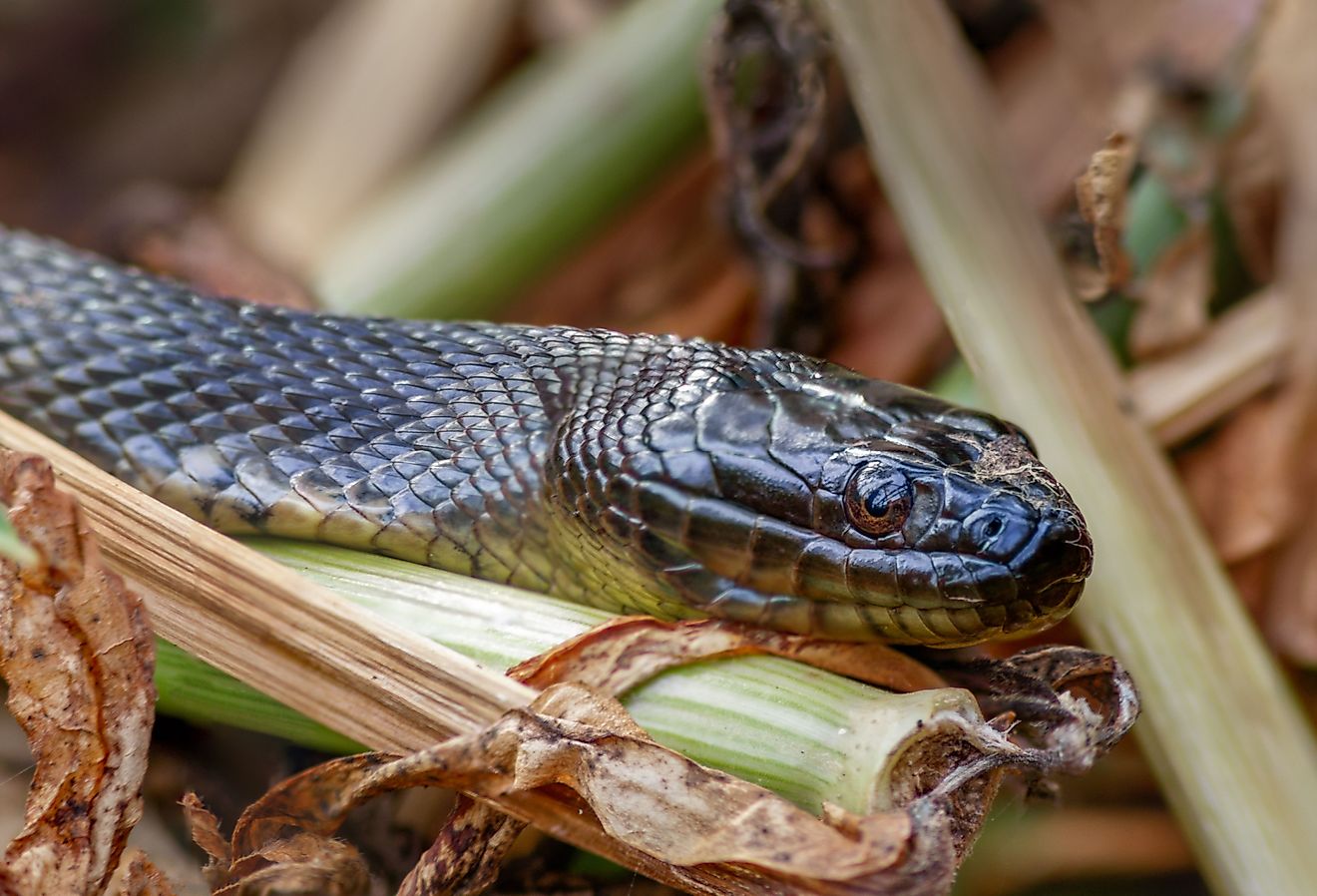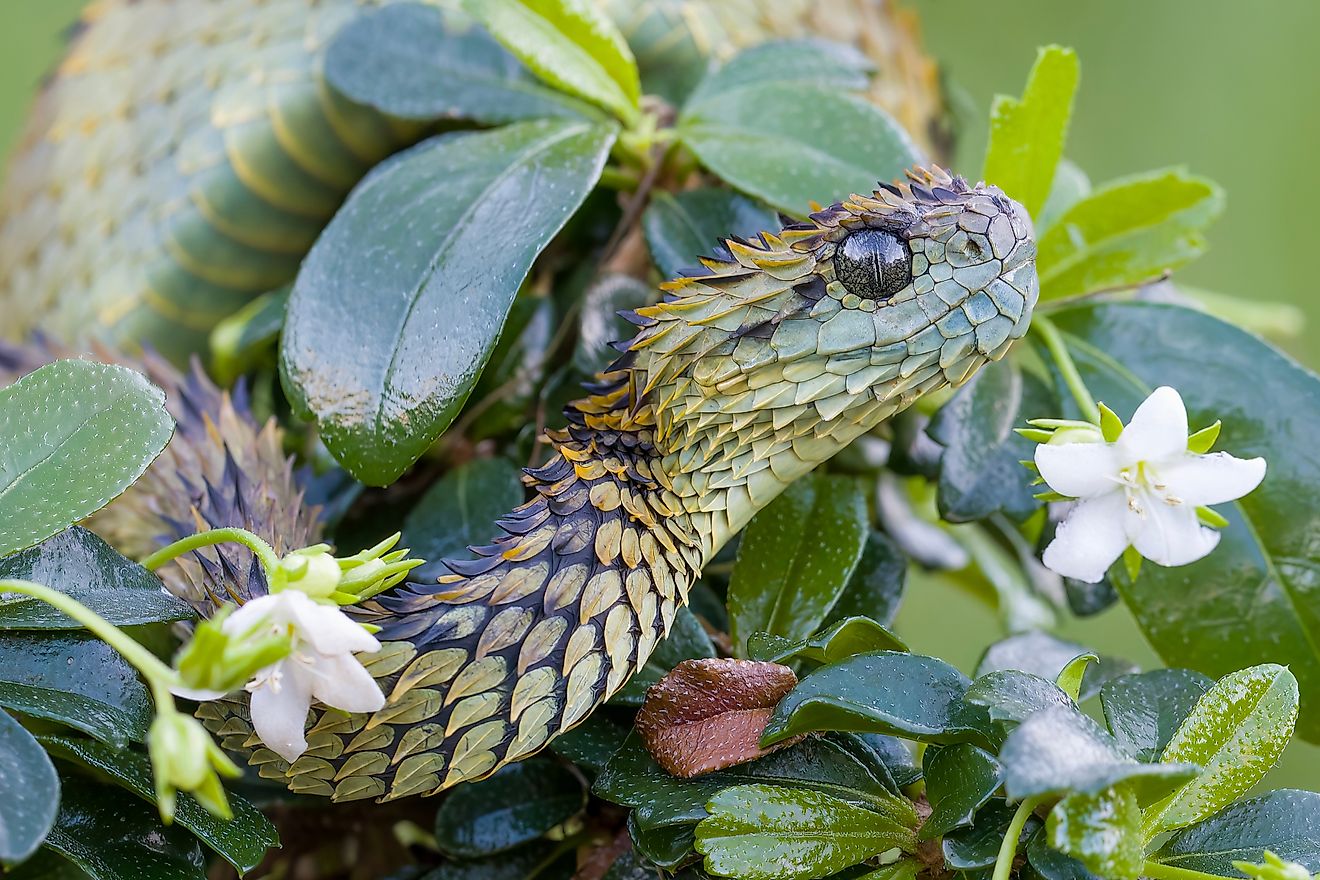
The Venomous Snakes Of New York
From the stunning Finger Lakes to the rugged beauty of the Adirondack Mountains, New York has some of the most breathtaking landscapes in the country. State parks and recreation areas make these wilderness areas highly accessible to visitors who want to get out of the city and unleash their inner adventurer, but they also encroach on the local wildlife, leading to greater interactions between animals and humans. Every visitor knows to watch out for bears, moose, and wolves, but we often forget that sometimes the smallest and most reclusive species are also a threat.
There are 17 snake species found in New York State, the most common of which are the non-venomous Garter Snake and Water Snake. Others, however, aren’t as harmless. New York has three species of venomous snake: the Timber Rattlesnake, the Northern Copperhead, and the Eastern Massasauga. While all three are fairly uncommon, it’s still important to learn about these vipers, especially if you’re spending any time exploring New York’s beautiful outdoors. By learning how to identify them, what to do if you spot one, and where they are likely to be found, you’ll be able to keep yourself safe and prevent any unwelcome encounters. Read our guide on which snakes to avoid in New York to enjoy a snake-free and stress-free vacation in the Empire State.
Timber Rattlesnake (Crotalus horridus)
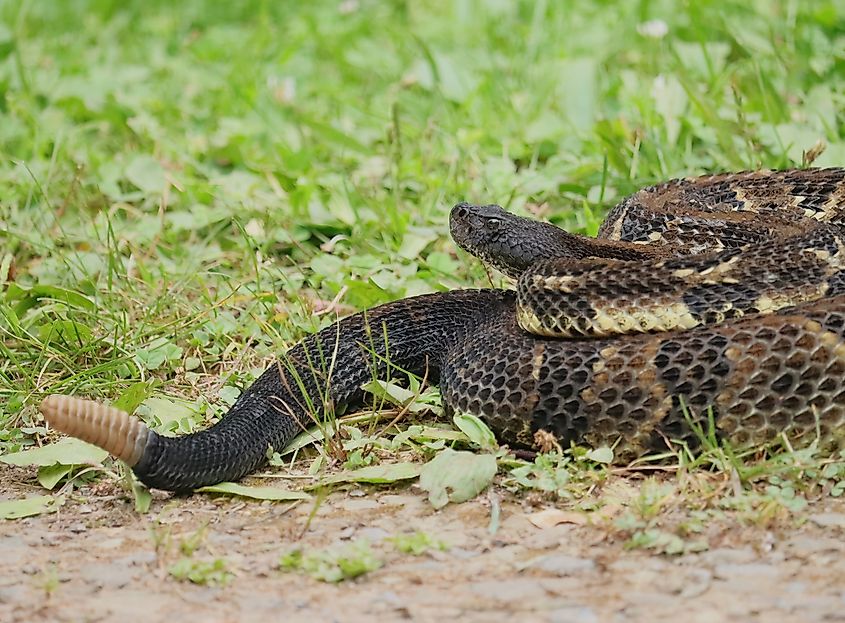
Listed as "Threatened" by the New York State Department of Environmental Conservation, Timber Rattlesnake populations have declined in the state due to collection, killing, and habitat destruction. They are found throughout the state, with recorded populations in southeastern New York, the Southern Tier, and on the edges of the eastern Catskills and Adirondacks.
Rattlesnakes typically prefer hardwood forests in rugged terrain such as bluffs, hills, and mountains. They can, however, also be found in wetlands and lowlands. Wherever they are, they look for crevices with southern sun exposure where they can make a snug den for the winter. During the warmer months, you may find them basking on open, rocky surfaces or foraging in the forest.

Timber Rattlesnakes are New York’s largest venomous snakes, measuring around 3 to 4 feet long with a thick body and a triangular-shaped head. They vary wildly in color, with some light and some dark. They have darker crossbands, which range from shades of yellow to brown and black. The easiest way to identify a Timber Rattlesnake is to look for the signature rattle at the end of the tail. You may also hear the snake before you see it, as it uses this rattle to scare off predators and signal a warning. Rattlesnakes mostly feed on small mammals, small birds, and amphibians. Their venom is paralytic, meaning it will immobilise their prey. Highly toxic, it can be fatal to humans; however, deaths are extremely rare.
If you’re visiting New York in summer, be especially mindful, as this is when rattlers are on the move. The snakes are most active between late April and mid-October. In the northern part of the state, they might not emerge from their dens until May if the temperature remains cold. Once the weather heats up, mating begins. Rattlesnakes have a fairly wide range, and males will roam a five-mile area to find a mate, hunting for females between early summer and early fall.
Eastern Massasauga (Sistrurus catenatus)

The Eastern Massasauga takes its name from a Chippewa word, meaning ‘great river mouth’. This is a nod to the snake’s preferred habitat of aquatic habitats such as wetlands, bogs, swamps, and marshes. In these areas, they look for open sunny spots where they can bask as well as shaded areas where they can hide away undisturbed. In the summer months, they may move to drier upland areas.
Listed as "Endangered" in New York, there are only two known populations of Eastern Massasauga in the state. These are located in large wetlands west of Rochester and in the Cicero Swamp Wildlife Management Area northeast of Syracuse. The latter group is being monitored and studied by researchers at the State University of New York in collaboration with the New York State Department of Environmental Conservation.
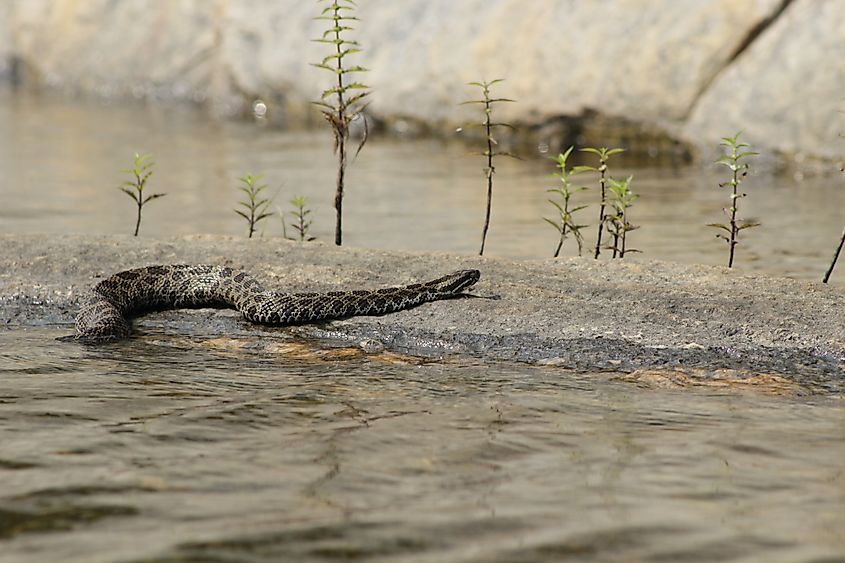
Massasaugas hibernate from late October to late April in wet lowlands. Their breeding season is typically between May and June. The snake is part of the rattlesnake family and has the rattle on the end of its tail, which it buzzes when disturbed or alarmed. You can also identify a Massasauga from the large, dark hourglass-shaped markings along its back. They are thick-bodied but not particularly long, with an average length of a little over 2 feet.
The venom of Eastern Massasauga is highly toxic and can damage tissues, prevent blood from clotting, and disrupt blood flow. They are, however, a docile and reclusive snake, so bites are very rare. As with most snakes, they simply want to be left alone and will try to avoid humans where possible.
Northern Copperhead (Agkistrodon contortrix)
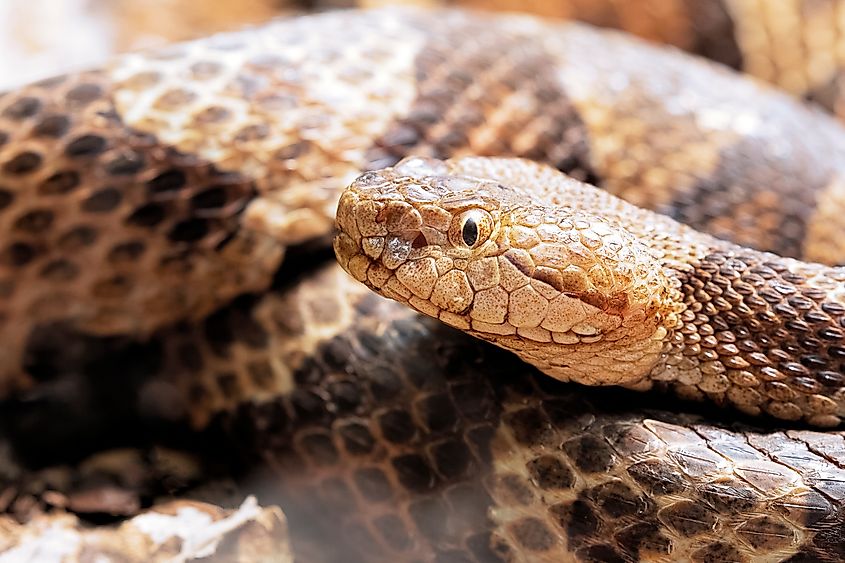
Found in the lower Hudson Valley and throughout the Catskills, the Copperhead is New York State’s most common venomous snake, but sightings are still rare. They are named for their distinctive rust-colored heads, which, like all pit vipers, are wide and triangular. You can also identify them from the dark colored bands across their body. They are an average-sized snake, growing around 3 ft long.
Copperheads are most at home in rocky and wooded areas. They often lurk under leaf litter on the forest floor, and also snuggle into woodpiles. As with most snakes, they are very reclusive and prefer to stay away from urban areas. Although Copperheads don’t have a rattle, they do have a similar behaviour. The snakes will shake the end of their tails when annoyed, which produces a faint, rattle-like noise when they are in leaves or dry grass.

Copperheads bite more people than any other species of snake in the United States. This doesn’t necessarily mean they are more aggressive than other species; they are often trodden on accidentally because they don’t have the rattler’s loud rattle or other distinct warning signs. Thankfully, their venom is not particularly toxic. Their bite can be very painful, but it is rarely fatal.
Snake Safety Tips
There are an average of 47 snakebites a year in New York State, around a fifth of which are from venomous snakes. On the rare chance that you are bitten, stay calm and seek medical help right away. Move as little as possible and keep the affected area at heart level. Do not apply a tourniquet or ice, or attempt to suck out the venom. With proper treatment, most snake bites are not life-threatening.
Taking common sense precautions, such as staying on the path when hiking, and never reaching or stepping into places where snakes can hide, will help you avoid getting bitten, but sometimes snake encounters happen. If you see a Timber Rattlesnake, Eastern Massasauga, or a Northern Copperhead when enjoying one of New York’s parks or recreation areas, leave it alone. Do not attempt to move it or otherwise disturb it. Give it plenty of space to leave the area and let a park ranger or staff member know about the sighting. Being mindful of the local wildlife is a must for anyone exploring the outdoors, but there’s no reason humans and snakes can’t happily coexist and enjoy New York’s beautiful habitats together.
